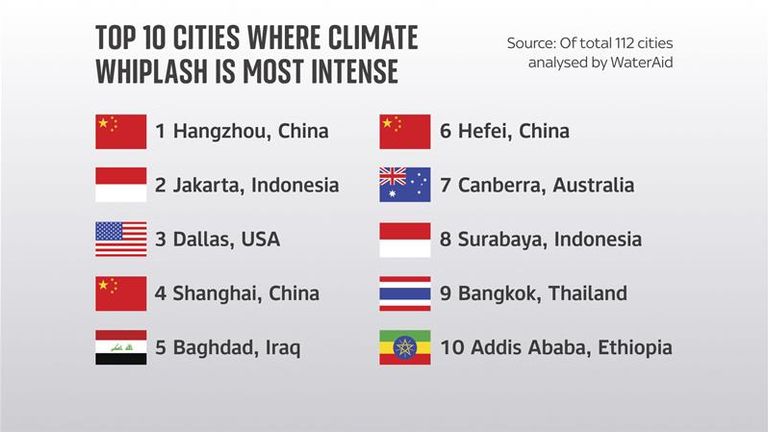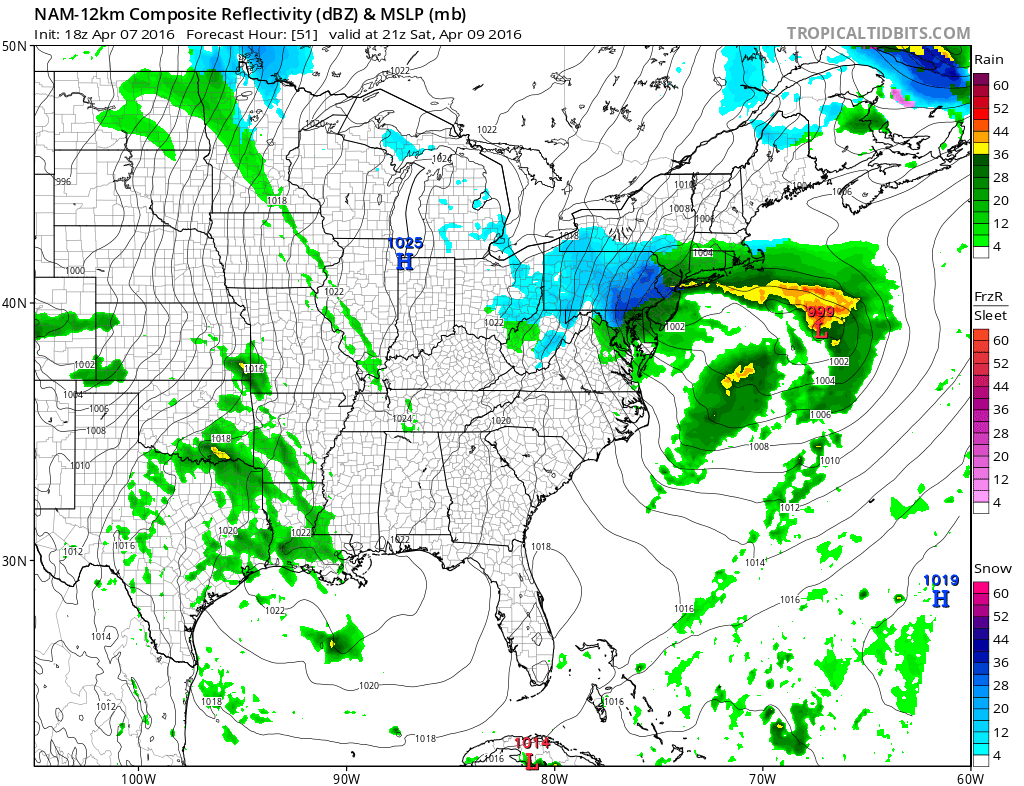How Dangerous Climate Whiplash Is Reshaping Cities Worldwide

Table of Contents
The Impacts of Climate Whiplash on Urban Infrastructure
Climate whiplash is putting immense strain on urban infrastructure, causing widespread damage and disruption. The unpredictable nature of these events makes planning and mitigation incredibly challenging.
Damage to Transportation Networks
Extreme weather events inflict significant damage on vital transportation networks.
- Floods: Submerge roads, bridges, and railway lines, causing extensive damage and requiring costly repairs. The 2022 Pakistan floods, for example, severely damaged thousands of kilometers of roads and railway tracks, crippling transportation for months.
- Heatwaves: Cause buckling and warping of roads and railway tracks, leading to closures and delays. Extreme heat can also damage airport runways, impacting air travel.
- Wildfires: Destroy bridges, roads, and power lines, disrupting transportation and isolating communities. The 2020 California wildfires resulted in the closure of major highways and caused significant delays in transportation.
This climate whiplash infrastructure damage necessitates billions of dollars in repairs and replacements, while simultaneously disrupting daily life and impacting the economy. Investing in extreme weather resilience and designing urban transportation vulnerability assessments are crucial steps towards mitigating future damage.
Strain on Water and Energy Systems
Climate whiplash creates significant stress on urban water and energy systems.
- Droughts: Lead to water scarcity, impacting drinking water supplies, sanitation systems, and agriculture. Cape Town's "Day Zero" crisis in 2018 serves as a stark warning of the potential consequences of prolonged droughts.
- Floods: Can overwhelm sewage systems, leading to contamination and health risks. They can also damage power plants and substations, causing widespread power outages.
- Storms: Damage power lines and disrupt electricity supply, leaving communities without power for extended periods. Hurricane Sandy in 2012 caused extensive damage to the power grid in New York City, highlighting the vulnerability of urban energy systems.
Addressing climate whiplash water scarcity and enhancing the energy grid vulnerability require investments in sustainable urban infrastructure, including water storage, renewable energy sources, and robust grid systems.
Damage to Buildings and Housing
The increasing intensity and frequency of extreme weather events are putting immense pressure on buildings and housing stock.
- Floods: Cause significant damage to homes and buildings, leading to displacement and financial hardship. Coastal cities are particularly vulnerable to rising sea levels and storm surges exacerbated by climate whiplash.
- High winds: Can damage roofs, windows, and building facades, particularly older structures.
- Wildfires: Destroy homes and entire neighborhoods, leaving communities devastated.
Developing robust climate whiplash building codes, promoting disaster-resistant housing, and integrating urban resilience planning into construction practices are critical steps to protect lives and property.
Climate Whiplash and Public Health
The health consequences of climate whiplash are severe and far-reaching.
Increased Heat-Related Illnesses and Deaths
Extreme heat events are a major public health concern, particularly for vulnerable populations like the elderly and those with pre-existing health conditions.
- Heatwaves contribute significantly to heat stroke, cardiovascular disease, and respiratory problems.
- The urban heat island effect, where urban areas are significantly warmer than surrounding rural areas, exacerbates the impacts of heatwaves.
- Strategies for heatwave preparedness, such as early warning systems and public cooling centers, are essential to mitigate the impact of climate whiplash health impacts.
Spread of Infectious Diseases
Unpredictable weather patterns can exacerbate the spread of infectious diseases.
- Flooding can contaminate water supplies, leading to outbreaks of waterborne diseases.
- Changes in temperature and rainfall can affect the distribution of disease vectors like mosquitoes, increasing the risk of vector-borne illnesses like malaria and dengue fever.
- Strengthening public health response mechanisms, including improved sanitation and disease surveillance, is crucial to counter the risks of climate whiplash disease outbreaks.
Mental Health Impacts
The emotional and psychological toll of frequent and severe extreme weather events cannot be ignored.
- Experiencing climate-related disasters can lead to stress, anxiety, post-traumatic stress disorder (PTSD), and depression.
- Access to mental health resources and support systems is critical to helping individuals and communities cope with the psychological impacts of climate whiplash mental health challenges. Addressing climate anxiety is a growing priority.
Adapting Cities to Climate Whiplash
Building resilient cities requires a multifaceted approach focused on infrastructure improvements, early warning systems, and comprehensive adaptation planning.
Investing in Resilient Infrastructure
Designing and constructing infrastructure that can withstand extreme weather events is paramount.
- Investing in climate-resilient infrastructure, such as elevated roads, flood defenses, and reinforced buildings, is a crucial step towards reducing the impact of climate whiplash.
- Integrating green building practices and implementing sustainable urban development strategies can enhance the resilience of urban areas.
Improving Early Warning Systems
Accurate and timely weather forecasting and warning systems are vital for saving lives and minimizing damage.
- Investing in advanced weather monitoring technologies and strengthening community-based early warning systems are essential.
- Effective communication strategies and community engagement are crucial for ensuring that warnings reach vulnerable populations.
Implementing Climate Adaptation Plans
Cities need comprehensive climate adaptation plans that address the specific risks posed by climate whiplash.
- These plans should incorporate strategies for improving infrastructure resilience, enhancing early warning systems, and promoting community preparedness.
- Implementing climate adaptation strategies requires strong political will, collaboration across sectors, and adequate funding. International cooperation is also crucial in addressing this global challenge.
Conclusion
Climate whiplash is reshaping cities worldwide, causing widespread damage to infrastructure, devastating impacts on public health, and significant mental health challenges. Understanding the devastating impact of climate whiplash is crucial. The unpredictability and severity of these events necessitate urgent action. We must invest in climate-resilient infrastructure, improve early warning systems, and implement comprehensive climate adaptation strategies to protect our cities and their inhabitants. Take action today by researching local climate adaptation initiatives and supporting policies that promote urban resilience against the increasing unpredictability of our climate. Learn more about how climate whiplash is affecting your city and how you can help.

Featured Posts
-
 Snow And High Winds Tuesday Important Weather Forecast Update
May 31, 2025
Snow And High Winds Tuesday Important Weather Forecast Update
May 31, 2025 -
 Dren Bio Et Sanofi Partenariat Strategique Pour L Immunologie Et Les Cellules Myeloides
May 31, 2025
Dren Bio Et Sanofi Partenariat Strategique Pour L Immunologie Et Les Cellules Myeloides
May 31, 2025 -
 Receta Autentica De Sopa Aragonesa Simple Y En Poco Tiempo
May 31, 2025
Receta Autentica De Sopa Aragonesa Simple Y En Poco Tiempo
May 31, 2025 -
 New Covid 19 Variant Driving Up Case Numbers In Several Regions According To Who
May 31, 2025
New Covid 19 Variant Driving Up Case Numbers In Several Regions According To Who
May 31, 2025 -
 Orange County High School Sports Friday May 23rd Game Results And Player Statistics
May 31, 2025
Orange County High School Sports Friday May 23rd Game Results And Player Statistics
May 31, 2025
